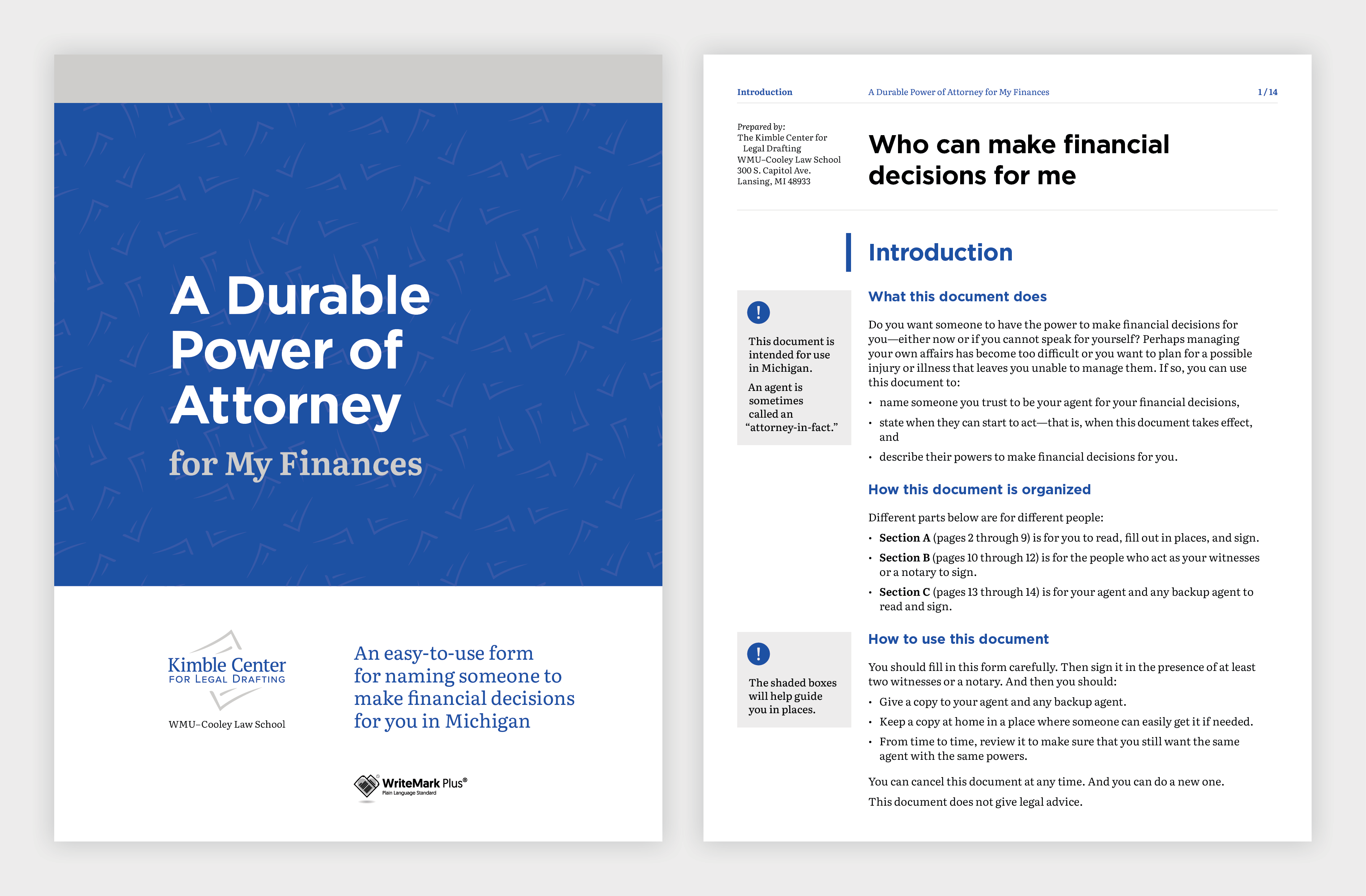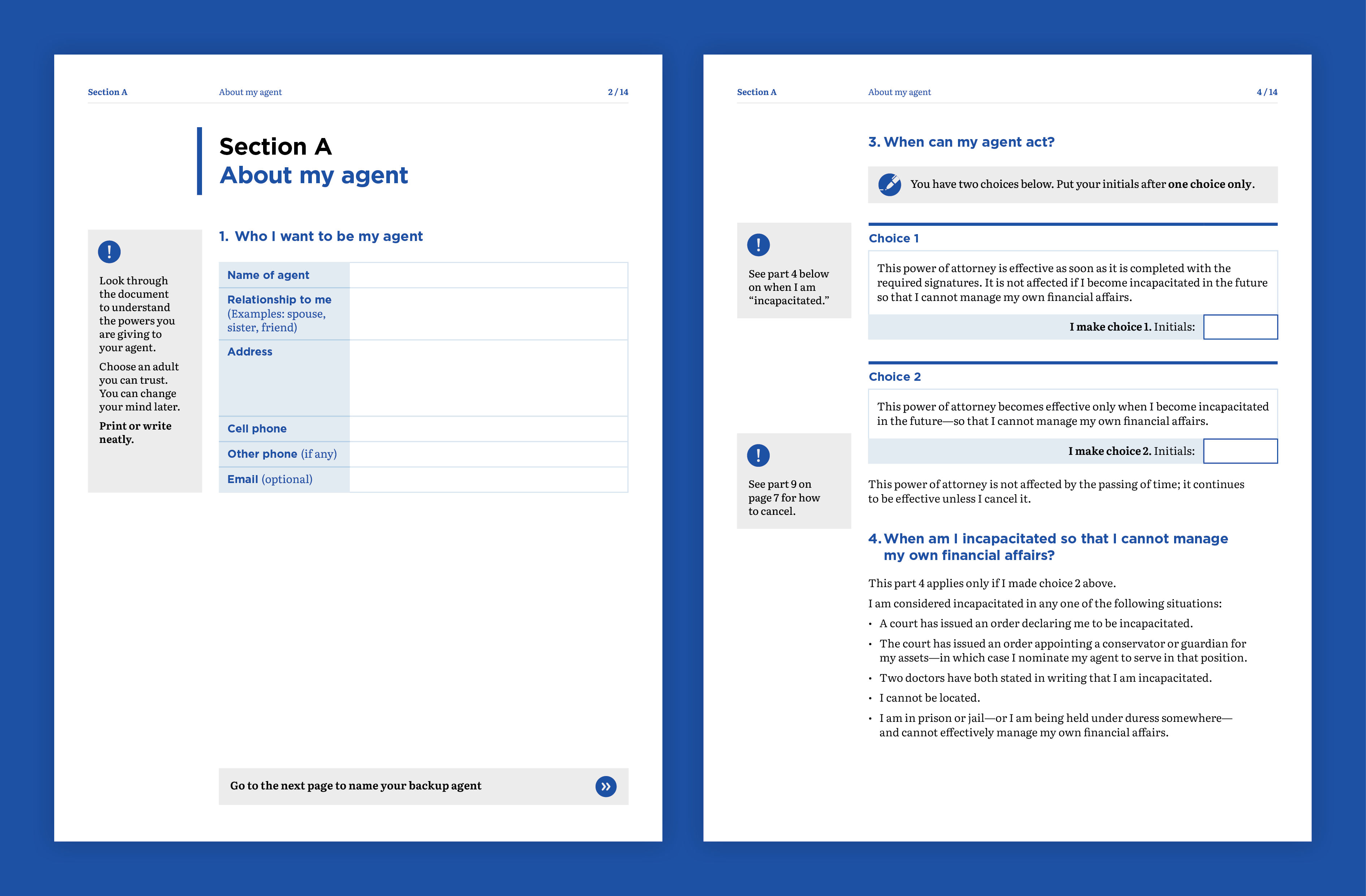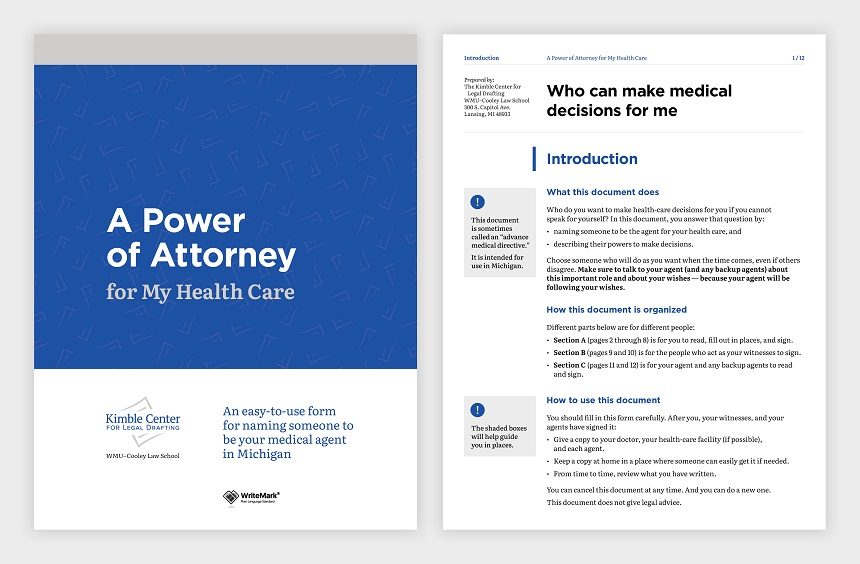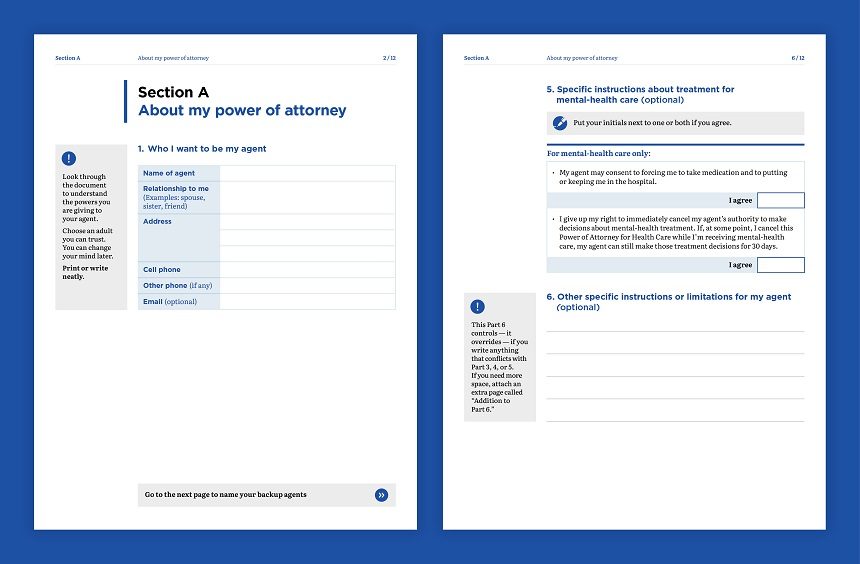WriteMark
Plain Language Standard
Why the WriteMark® matters more than ever in the age of AI writing

Photo by cottonbro studio / Pexels licence
One of our favourite plain language mottos adorns the wall in massive text at Write’s Wellington office. It’s from Sir Ernest Gowers’ book, Plain Words: ‘Be short, be simple, be human’.
It’s a motto that follows its own advice.
In the burgeoning age of ‘AI’ text generation, human writing for human readers is more important than ever. And that makes the WriteMark® an even more valuable symbol of people-centric plainness.
Here’s why a quality mark for clear communication matters even more in the age of AI.
People-centric writing stands out in an AI-generated torrent
The WriteMark® has always been a way to show your readers you care.
The heart-shaped symbol demonstrates your commitment to being clear, open, and customer-focused. It signals to your audience that you’ve gone the extra mile to ensure they understand what you’re telling them, which builds trust and confidence.
We think readers will particularly appreciate the WriteMark’s® quality promise as AI writing proliferates. AI-generated text risks ‘infecting’ AI training data — the library of information that AI tools use to create their responses. This may degrade the quality of AI outputs over time, as they reinforce and amplify their own distortions and biases. Commentators have called this an ‘AI ouroboros’
Read about the ouroboros on Medium’s website
In this uncertain future of AI writing, the WriteMark® will signify people-centric writing that gives readers confidence and helps to form human connections between author and audience.
Our human assessors give human insights
In a WriteMark® assessment, qualified experts read documents, assess them against 25 carefully selected criteria, and produce a report packed with insights and recommendations. They apply a critical eye, drawing on their experience and understanding — as both writers and readers — to identify what works and what needs work. This experience and insight helps to shape documents that serve their writers — and their readers.
AI can do some incredible things, if you know how best to use it. By drawing from untold libraries of human writing and thought, it can generate convincing text and images in the blink of an eye. It can educate and entertain, adapting its tone and language for any conceivable audience. But AI is not critical, creative, or insightful — not yet.
Big-picture elements require critical thought
AI can provide lots of helpful advice for some of the more mechanical aspects of plain language, like sentence structure and word choice. But humans can still do a few things better — like thinking.
‘Artificial intelligence’ is a bit of a misnomer, because tools like ChatGPT and DALL·E 3 are not thinking or creating. They draw on vast sets of training data from the web and use predictive patterns to spit out realistic answers to prompts.
This means AI would struggle to meet or assess some WriteMark® criteria, especially big-picture elements. It takes critical thought to determine whether a document has:
- a clear purpose
- an overall structure that helps readers to understand it
- answers to all the questions a reader is likely to ask.
AI is improving constantly, and quickly. But answering these questions requires critical analysis and holding the ‘big picture’ in mind — skills that today’s AI tools can only imitate.
AI can be a cultural liability
Our assessors have another advantage over AI tools — their Kiwi cultural context and sensitivity.
AI tools draw on training data from all corners of the internet. This means they tend to replicate and reinforce existing biases in that data. Aotearoa New Zealand represents a tiny corner of the internet, so our cultural differences are easily overwhelmed by American and European norms in AI’s predictive patterns.
Why does this matter? One element we assess for the WriteMark® is whether the document has an appropriate style and tone for its audience. Aotearoa’s cultural context is different from the rest of the world in lots of small ways — as well as the big ones, like the role of te reo and te ao Māori. The words we use and the way we express ourselves are distinct, as are our history, economy, politics, and culture.
AI tools are liable to get these small things wrong, because they draw from the wilderness of the World Wide Web. As well as setting the wrong ‘style and tone’ for our specific cultural context, relying on AI can lead to embarrassing and even offensive errors.
The WriteMark® Plus gives unrivalled insight into how readers experience a document
On top of using human experts to assess documents for the WriteMark, we get human non-experts to test how well a document serves its readers for the WriteMark® Plus.
User-testing with real readers always uncovers unforeseen sticking points. Human testers can help identify things like:
- whether a certain word choice or section is confusing
- whether a document’s structure matches readers’ expectations
- whether a document is accessible to readers of all abilities
- whether a document is practical to use in the real world.
AI is clever, and convincing. But there’s simply no substitute for testing a document with its target audience.
AI can be a powerful plain language tool — learn how to use it safely
While human expertise can’t be beaten when it comes to the high standard of the WriteMark, we still recognise the value of this powerful tool.
That’s why Write has added an Write smarter with AI workshop to our roster, and why we’re keeping up to date with advances in the field.
Check out our workshop, Write smarter with AI
Read our blog post about how to get the most from AI
Ryan Tippet February 12th, 2024
Posted In: Plain English, Plain language, Plain Language Awards, The WriteMark, WriteMark Plus
Tags: AI, AI Writing, clear communication, clear language, clear thinking, clear writing, plain language, power of plain language, Quality writing, the WriteMark, WriteMark, WriteMark Plus
Clear legal documents give clear legal authority

Naming a power of attorney means someone else can make decisions for you if you can’t | Photo by Romain Dancre on Unsplash
We all hope we’ll always be able to make our own decisions about our finances and property. But what if we can’t?
Anyone can lose the ability to deal with their affairs through accident or illness. If nobody has the legal authority to act for you or sign documents, dealing with your affairs can be difficult and stressful for you and your family.
A durable power of attorney allows you to give someone the legal power to deal with your affairs and make decisions for you. Setting up a power of attorney means that you control who manages your affairs.
Building a library of free-to-use legal resources
The Kimble Center for Legal Drafting, based at Western Michigan University–Cooley Law School in the US, specialises in writing easy-to-understand legal documents. Their mission is to produce clear legal documents that are free for the public to use in Michigan.
The Kimble Center has published a new Power of Attorney document. People can use it to name someone they trust to make decisions about their finances if they’re not able to.
Reaching the high standard of the WriteMark® Plus
The new Power of Attorney follows the pattern of the earlier Power of Attorney for My Health Care. And it has been assessed as meeting the WriteMark® criteria for purpose, structure, content, language, and design.
Eventually the Power of Attorney for My Finances also achieved the WriteMark® Plus Plain Language Standard. The WriteMark® Plus combines an elements-based assessment with user-testing. The results of user-testing led to further fine-tuning of the content.

Design elements guide the user through the document | Image by Gusto Design
Using careful design to support the purpose of the document
The Kimble Center engaged the team at Gusto Design to create a design that would support clarity and accessibility.
Annette Ellis, Creative Director at Gusto, explains:
Once again, we worked with the Kimble Center for Legal Drafting to make a complex process clear and easy to understand. The plain language used in the Power of Attorney form is visually supported using design elements that guide the user through the form, making it easy for users to understand and fill out the required information.
Instructions are provided as shaded boxes adjacent to the form fields, providing users with additional information that helps them understand how to fill out the form correctly. This extra guidance is critical to ensure the form accurately captures their wishes.
The form is screen-readable, and it has fillable fields that make it extra easy to use.

Clear design is critical to ensure the form accurately captures the user’s wishes | Image by Gusto Design
Creating legal documents with a difference
With its plain language and simple design, the Power of Attorney for My Finances joins its health-care companion as a legal document unlike most others.
Joseph Kimble, Distinguished Professor Emeritus at WMU–Cooley Law School, explains:
These two powers of attorney — one for medical decisions and the other for financial decisions — are unlike any legal document you are used to seeing. Both have been tested with users, and both of them are about as user-friendly as they can be.
The lesson? Legal documents do not have to be impenetrable to ordinary readers.
‘Clear and easy to read’
Achieving the WriteMark® Plus gives the Kimble Center and users of their document library extra assurance that the document is as clear as it can be.
In this case, user-testing participants had lots of praise for the document. Here are a few of their comments:
It’s clear and it’s easy to read.
The layout and design of the document is clear and easy to read. It’s a five out of five. Lovely!
This certainly is concise, clear layman terms to tell them what the intended use is and then how to use it.
How easily explained each section of it is … I think it was really, really well designed and very self-explanatory. And just really nicely laid out and easily understandable.
Joseph Kimble enjoyed working with the teams at Write and Gusto.
This is the second project on which the Kimble Center for Legal Drafting has teamed with Write and Gusto. Both are a joy to work with. They deliver on time, and their editing and design work is superb.
Find out more about WriteMark® Plus — the ultimate in communication excellence
The Kimble Center for Legal Drafting paves the way for innovative legal documents. This article on the Center’s website describes its origins and goals.
Anne-Marie Chisnall November 29th, 2022
Posted In: WriteMark Holders, WriteMark Plus
Tags: accessibility, clear language, form, Joseph Kimble, Kimble Center for Legal Drafting, Legal documents, WriteMark Plus
Simplified general insurance policies get tick for clarity

When it comes to claim time, everyone knows exactly what’s covered and what’s not | Photo by Michael Jin on Unsplash
Insurance policies have a reputation for being hard to understand. Vero and ANZ have gone the extra mile to make the ANZ Asset Protector policy wording booklet easy to read. The booklet of five policy wordings meets the Standard for being clearly written and user-friendly.
When customers are choosing an insurance policy, they look for one they can understand. A clear policy document inspires trust in the insurance provider and supports a long-term relationship between insurance provider and customer. When it comes to claim time, everyone knows exactly what’s covered and what’s not.
Clear writing and user-testing made the difference
All five of the ANZ Asset Protector policy wordings have been awarded the WriteMark® Plus. The policy wordings cover homes, contents, cars, boats, and lifestyle blocks.
To get the WriteMark®, the policy wordings were written using plain language to clarify complexity. To get the ‘Plus’, they were user-tested with a sample of their target audience. Writers used the feedback from user-testers to further improve the clarity and usability of each policy wording.
The five policy wordings are bound into a booklet, which is available in print, and as a PDF on ANZ and Vero’s websites. People can choose from the range of policies, buying as few or as many policies from the booklet as they need.
Read the ANZ Asset Protector policy wording booklet at the ANZ website
Delivering a great outcome for customers
Sacha Cowlrick, Vero’s Executive Manager Consumer, explains that delivering great customer outcomes starts with ensuring customers understand their insurance. So working with their partners at ANZ to deliver plain language policies has been a priority.
‘It’s about making it easy for our customers to understand what an insurance policy does and doesn’t cover, as well the responsibilities they have. Clarity and transparency in the policy wording is the recipe for great claims experiences. We’re confident that the simplified language, layout, and navigation in our new policy wordings will deliver this clarity.’
Sacha said the feedback from user-testing showed this too, with some participants surprised by the extent of policy cover.
‘User-testing also enabled us to check the parts of the policy wording that previously caused confusion or surprise for customers when making a claim. The new plain language wording has passed the test.’
Worthy of the ‘Plus’ — tested by the target audience
Lynda Harris, Chief Eexecutive of WriteMark® and Write Group, says she’s excited to know the ANZ Asset Protector policy wordings are joining the ranks of documents worthy of WriteMark® Plus.
‘Achieving the WriteMark® Plus is testament to a lot of hard work and shows true dedication to improving the customer experience.’
The WriteMark® Plus is only awarded to documents and websites that:
- meet the WriteMark’s® rigorous standards for clear writing and reader-friendly design
- have been user-tested to confirm that both the writing, and the content as a whole, are easily usable by the intended reader.
Check out the full list of WriteMark® and WriteMark® Plus holders
Inez Romanos October 14th, 2021
Posted In: WriteMark Holders, WriteMark Plus
Tags: ANZ, Insurance writing, WriteMark Plus
Kimble Center’s healthcare form awarded ClearMark

The Kimble Center's Power of Attorney for healthcare goes to new heights | Photo by Brands&People on Unsplash
Could the Kimble Center for Legal Drafting’s Power of Attorney for healthcare win any more accolades? Turns out the answer is a definite ‘yes’.
The ClearMark Awards judged the healthcare form worthy of the award for best legal document. The ClearMarks are organised by the US Center for Plain Language and recognise the best plain language communications created by organisations in North America. The Center’s Barbra Kingsley and Alex Miranda announced the 2021 winners as part of the Access for All virtual conference in May.
The judges said about the power of attorney that:
[it] is a wonderful example of making legal text accessible.
And they went on to say:
The writers conducted several different kinds of user testing, including with health professionals and typical lay users. They also benefited from input from the Center’s international board members and PL (plain language) experts in New Zealand. The effort shines through. It’s an exemplary piece, worthy of being winner in its category.
View the list of ClearMark winners
Read about the ClearMark award in an article by Oakland County Legal News
Taking legal documents to new heights
The Kimble Center for Legal Drafting paves the way for innovative, accessible legal documents. This article on the Center’s website describes its origins and goals.
People can use the Power of Attorney document to set up a person they trust to make decisions about their healthcare if they’re not able to. The Power of Attorney is easy to understand and fill out — and it’s free to use for US citizens.
More than 1000 people have used the form since it was published.
Find out more about WriteMark® Plus — the ultimate in communication excellence

Design elements guide the user through the document. Image by Gusto Design.
Anne-Marie Chisnall May 21st, 2021
Posted In: The WriteMark, WriteMark Holders, WriteMark Plus
Tags: accessibility, ClearMark, Joseph Kimble, Kimble Center for Legal Drafting, Legal documents, plain language, WriteMark, WriteMark Plus
Kimble Center’s Power of Attorney goes to the top of its class

Organising a power of attorney document for your healthcare means others can take care of you when you can’t. Image by Bimatshu Pyakuryal / Unsplash licence
We all hope we’ll always be able to make our own decisions about our healthcare. But what if we can’t?
The Kimble Center for Legal Drafting, based at Western Michigan University–Cooley Law School in the US, has published a new Power of Attorney document. People can use the Power of Attorney to set up someone they trust to make decisions about their healthcare if they’re not able to. What’s more, the Power of Attorney is easy to understand — and it’s free to use for US citizens.

Design elements guide the user through the document. Image by Gusto Design.
The Kimble Center’s legal team decided they wanted their new document to be top of its class. So they first asked the members of their advisory board for feedback. Then they applied for another layer of review through the WriteMark assessment process.
The WriteMark® assessment considers purpose, structure, content, language, and design as part of a rigorous document analysis.
Design to support the purpose of the document
The Center engaged the team at Gusto Design to create a design that would support clarity and readability.
Annette Ellis, Creative Director at Gusto, explains:
We worked with the Kimble Center for Legal Drafting to make a complex process clear and easy to understand. The plain language used for the Power of Attorney form is visually supported using design elements that guide the user through the form, making it easy for them to understand and fill out.
Instructions are provided as shaded boxes adjacent to the form fields, providing users with additional information that helps them understand how to fill out the form correctly. This extra guidance is critical to ensure the form accurately captures their wishes.

Clear design is critical to ensure the form accurately captures the user’s wishes. Image by Gusto Design
All boxes ticked
With its plain language and simple design, the Power of Attorney for My Health Care goes to the top of its class. It meets all the elements of the WriteMark® Plain Language Standard — and it’s the first document of its type to achieve the Standard.
Joseph Kimble, Distinguished Professor Emeritus at WMU–Cooley Law School, acknowledges the input from the WriteMark® team:
I’m grateful for the invaluable suggestions we received from Anne-Marie Chisnall (a member of our international board of advisers) and then from the WriteMark® assessment team. Those suggestions significantly improved almost every page.
And tested with users too
Since we originally published this story, researchers at Michigan State University have user-tested the Power of Attorney document. The Kimble Center applied recommendations from the user-testing report and did a little rewording and redesigning of the document. With these changes, the Power of Attorney achieved WriteMark® Plus.
WriteMark® Plus is awarded to documents that have reached the WriteMark® Standard and that also undergo user-testing for further fine-tuning.
Find out more about WriteMark® Plus — the ultimate in communication excellence
Legal documents unlike anything that the public has seen before
The Kimble Center for Legal Drafting paves the way for innovative legal documents. This article on the Center’s website describes its origins and goals.
Anne-Marie Chisnall July 31st, 2020
Posted In: The WriteMark, WriteMark Holders, WriteMark Plus
Tags: accessibility, Joseph Kimble, Kimble Center for Legal Drafting, Legal documents, plain language, the WriteMark, WriteMark Plus
Heart from the start — the story of the WriteMark®

If you’ve earned the WriteMark, you’re in good company. Image by Jon Tyson. Unsplash license.
It’s no coincidence that the WriteMark® logo is shaped like a heart. From a flicker of frustration in the late 90s to ‘the Oscars of plain language’ today, the notion of heart has pulsed through.
Heart in the sense of care and commitment to customers, and heart in the sense of backbone and determination.
In 1999, after almost 10 years helping people write better business documents, Write Group’s Lynda Harris felt a growing discontent.
‘I felt that we weren’t yet making enough of a difference.’
More talk than walk
With a few notable exceptions, we were still being asked to train groups of 12–14, rather than whole organisations. This meant that the effect of the training was often quickly undone by well-meaning managers. The pull of business-as-usual was strong.
‘A lot of our clients openly said they wrote in plain English, or had set that as an expectation, but in the thousands of business documents that passed through our hands each year, we saw very little in practice.’
A twin solution needed
It was crucial to get everyone to truly see what clear writing looked like, and to understand the profound effect it had on relationships and revenue.
Two things were needed: a clear standard of plain language and an easy way to show when something had met that standard.

A home-grown twin approach. Image by Jørgen Håland. Unsplash licence.
Crystal clear — but not over here
In 2000, Write began working with the UK-based Plain English Campaign and its badge of clarity — the Crystal Mark. The Crystal Mark showcased organisations that really cared about communicating clearly and openly. And it introduced both a quality standard and a way of recognising you’d met it.
But the UK-priced Crystal Mark proved too expensive for New Zealand businesses and didn’t feel relevant for our market. After 2 years, Lynda knew she had to try again with something just right for New Zealand.
WriteMark® sets the New Zealand standard
It took time, courage, and commitment, but by mid-2004 the idea for New Zealand’s homegrown WriteMark® had started coming to life.
‘We were a small, highly skilled company, passionate and dedicated to spreading the plain language message. If we were going to launch our own mark, it had to work.
‘We held focus groups in the public and private sectors and did extensive research into international plain language organisations. We set and refined the elements that make up the WriteMark® Standard, and set up a training and moderation process for assessors.
‘We based our fees as low as we could to encourage all New Zealand organisations to invest in plain English. We offered free WriteMark® assessments to organisations that had already advertised a commitment to plain English. They could immediately see the benefits of a standard-based assessment.’

From New Zealand to the world
On 1 March 2005, the WriteMark® launched, and it didn’t take long for businesses and government to take notice.
Over the years WriteMark®’s assessors have checked hundreds of documents against 28 criteria, and helped writers make changes where their documents don’t measure up.
The WriteMark® criteria reflect internationally recognised benchmarks for plain language and clear online communication. They include plain language, usability, suitability for the target audience, and design.
Although grown in New Zealand, the WriteMark® also distinguishes quality documents and websites overseas.
Recent recipients of the WriteMark® say the quality mark is the ultimate achievement for advocates of plain language. It reassures readers that something is clear, expert, and has reliable information that people can follow.
Achieving the WriteMark® shows your genuine care and consideration for customers, with a side effect of saving time and building trust.
User-testing a real plus
Today, holders of the WriteMark® can go even further to show they’re committed to excellent communication with customers. WriteMark® Plus combines an expert assessor view with insights from the people who matter.
A WriteMark® Plus quality mark shows that you’ve also rigorously tested your content on real people in your target audience
Using the power of words for good
For Lynda, it has always been about real people and using the power of words for good.
‘People can communicate their ideas and get the information they need. And ultimately it leads to a fairer, more respectful society.’
A society with heart.
Anne-Marie Chisnall September 10th, 2019
Posted In: Plain language, The WriteMark
Tags: clear language, clear thinking, clear writing, improved writing, industry standards, plain language, power of plain language, Quality writing, user-testing, WriteMark Plus, writing for the public